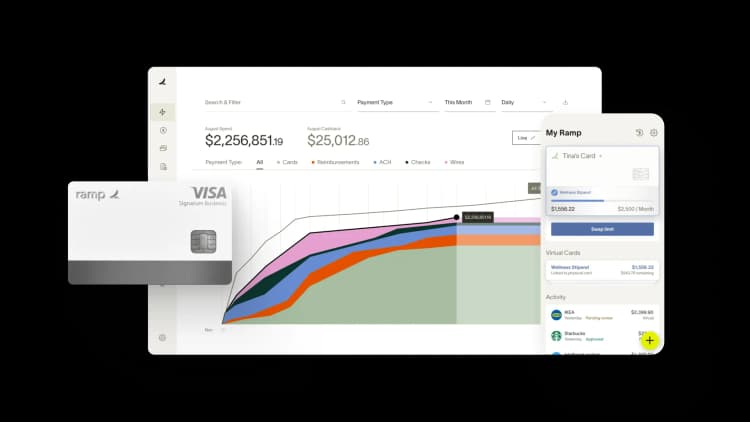
- What is generative engine optimization?
- Where did generative engine optimization come from?
- How does GEO work, and how is it used today?
- Why does GEO matter?
- TL;DR

What is generative engine optimization?
Generative engine optimization (GEO) is a digital marketing strategy that focuses on enhancing the visibility and influence of content within AI-generated responses. Unlike traditional search engine optimization (SEO), which aims to improve rankings on search engine results pages (SERPs), GEO targets AI-driven platforms that generate direct answers to user queries.
The goal of GEO is to ensure that a brand's content is accurately interpreted, cited, and presented by AI systems, thereby increasing its reach and authority in an environment where users increasingly rely on AI-generated information.
Where did generative engine optimization come from?
GEO emerged in early 2023 to 2024 as a response to the rise of AI-powered search engines and conversational interfaces like ChatGPT, Bing Chat, and Google's Search Generative Experience. As these platforms began serving direct, synthesized answers rather than traditional lists of search results, marketers and content creators recognized a need to optimize content for AI interpretation and visibility—not just for human readers or traditional search engine crawlers.
The concept gained rapid traction within the SEO and content strategy communities as it became clear that AI models were changing how users discover and interact with information online. Instead of optimizing purely for rankings in SERPs, GEO (sometimes confused with AEO) is about how to become the source that AI cites, summarizes, or presents in an answer.
By mid-2024, as AI-generated overviews were rolled out more widely across Google and other platforms, GEO became an increasingly critical component of modern digital marketing strategy.
How does GEO work, and how is it used today?
GEO involves several key strategies to optimize content for AI-driven platforms:
- Structured content: Organizing information with clear headings, bullet points, and concise paragraphs to facilitate AI parsing
- Authoritative sources: Including citations, statistics, and expert opinions to enhance credibility
- Semantic markup: Utilizing schema.org and other metadata to provide context and improve machine readability
- Conversational language: Writing in a natural, question-and-answer format to align with how users interact with AI tools
- Regular updates: Keeping content current to ensure relevance and accuracy in AI responses
By implementing these strategies, businesses can increase the likelihood that their content will be featured in AI-generated answers, thereby reaching a broader audience.
Why does GEO matter?
As AI-driven search becomes more prevalent, traditional SEO tactics are less sufficient to maintain online visibility. GEO addresses this shift by optimizing content for the way AI systems retrieve and present information. Benefits of improving GEO include:
- Enhanced visibility: Increased chances of being cited in AI-generated responses
- Improved credibility: Association with authoritative content can boost brand trust
- Competitive advantage: Early adoption of GEO practices can position brands ahead of competitors in AI-driven search results
Incorporating GEO into digital marketing strategies may become essential for businesses aiming to stay relevant in an evolving search landscape dominated by AI technologies.
TL;DR
Generative engine optimization (GEO) is a digital marketing approach that enhances content visibility in AI-generated search results by structuring and optimizing information for AI interpretation and citation. As AI-driven platforms become central to how users access information, GEO is crucial for maintaining and improving online presence.

“Ramp gives us one structured intake, one set of guardrails, and clean data end‑to‑end— that’s how we save 20 hours/month and buy back days at close.”
David Eckstein
CFO, Vanta

“Ramp is the only vendor that can service all of our employees across the globe in one unified system. They handle multiple currencies seamlessly, integrate with all of our accounting systems, and thanks to their customizable card and policy controls, we're compliant worldwide.” ”
Brandon Zell
Chief Accounting Officer, Notion

“When our teams need something, they usually need it right away. The more time we can save doing all those tedious tasks, the more time we can dedicate to supporting our student-athletes.”
Sarah Harris
Secretary, The University of Tennessee Athletics Foundation, Inc.

“Ramp had everything we were looking for, and even things we weren't looking for. The policy aspects, that's something I never even dreamed of that a purchasing card program could handle.”
Doug Volesky
Director of Finance, City of Mount Vernon

“Switching from Brex to Ramp wasn’t just a platform swap—it was a strategic upgrade that aligned with our mission to be agile, efficient, and financially savvy.”
Lily Liu
CEO, Piñata

“With Ramp, everything lives in one place. You can click into a vendor and see every transaction, invoice, and contract. That didn’t exist in Zip. It’s made approvals much faster because decision-makers aren’t chasing down information—they have it all at their fingertips.”
Ryan Williams
Manager, Contract and Vendor Management, Advisor360°

“The ability to create flexible parameters, such as allowing bookings up to 25% above market rate, has been really good for us. Plus, having all the information within the same platform is really valuable.”
Caroline Hill
Assistant Controller, Sana Benefits

“More vendors are allowing for discounts now, because they’re seeing the quick payment. That started with Ramp—getting everyone paid on time. We’ll get a 1-2% discount for paying early. That doesn’t sound like a lot, but when you’re dealing with hundreds of millions of dollars, it does add up.”
James Hardy
CFO, SAM Construction Group






